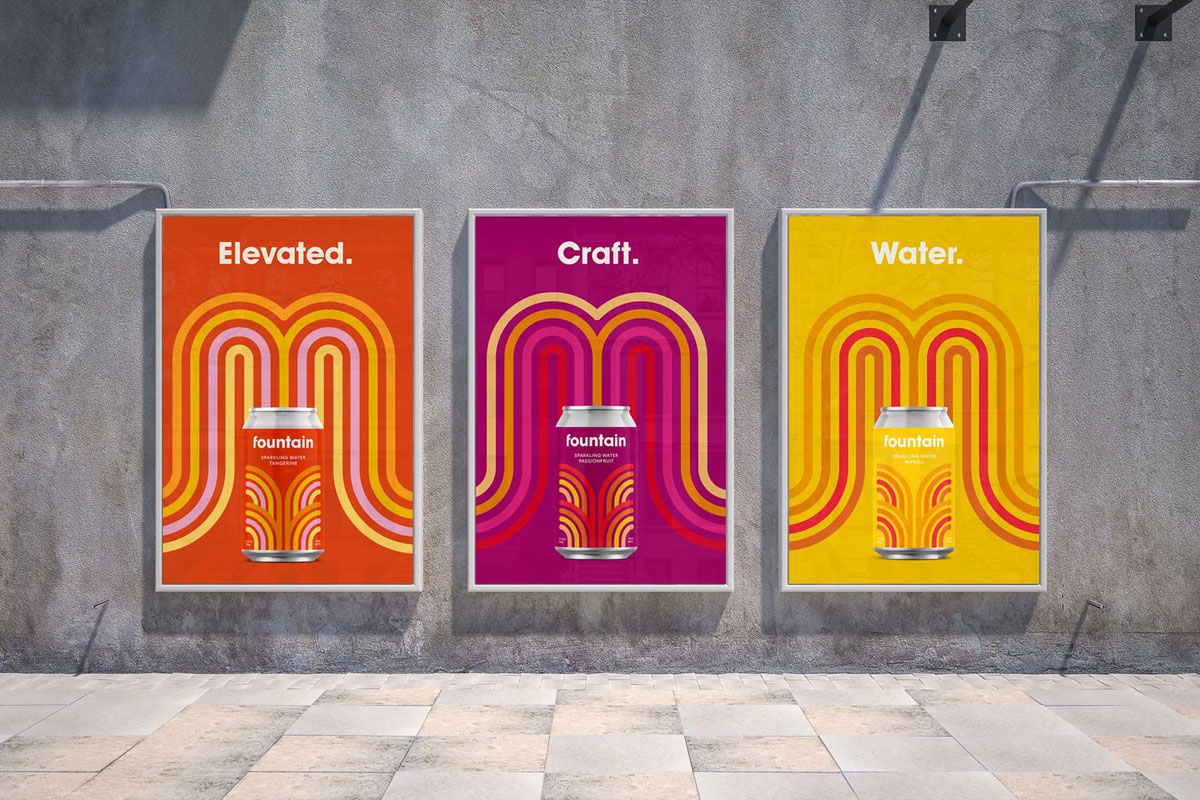Crafting a Compelling Brand Story: Best Tips & Insights

[01]
blog info
Most brands tell stories about themselves. Features, benefits, company history, awards won. These aren't stories. They're press releases.
Real brand stories put customers at the centre. They identify problems worth solving, show transformation, and create emotional connections that drive behaviour.
Strategic brand storytelling merges psychology, planning, and execution. It uses human emotions to guide actions toward clear business goals.
Here's how to craft a brand story that people remember and repeat.
What Brand Storytelling Actually Means
Brand storytelling captures the essence of your brand through authentic, engaging narratives. It weaves visuals, emotion, and meaning to connect your brand with audiences in ways product descriptions never could.
The goal isn't entertainment. It's creating emotional connections that influence perception and drive loyalty.
When done well, brand storytelling:
- Makes your brand memorable (stories stick, facts fade)
- Differentiates you from competitors (anyone can copy features, nobody can copy your story)
- Builds emotional connection (people remember how you made them feel)
- Drives word-of-mouth (good stories get shared)
Brand storytelling showcases personality and forges meaningful connections. This cultivates favourable perception and customer loyalty over time.
The 4 Cs of Brand Storytelling
Character
Every story needs a protagonist. For brand stories, the character might be your founder, your team, or most powerfully, an actual customer.
The character needs a mission, encounters obstacles, and can't return unchanged. This human element makes your company feel real.
Good characters are:
- Relatable (audiences see themselves in the character)
- Flawed (perfection is boring and unbelievable)
- Driven (they want something specific)
- Changed (they evolve through the story)
When choosing your character, pick the most human lens on your value. If you're uncertain, lead with a real customer whose journey mirrors your primary use case.
Conflict
Conflict grabs attention and creates stakes. It's the problem your brand solves, the obstacle your character faces, the tension that demands resolution.
No conflict means no drama. No drama means people stop paying attention.
Picture your founder encountering a broken system or a customer frustrated by clumsy processes. The conflict makes clear why your brand matters.
Good conflict is:
- Specific (not "business is hard" but "invoicing took 40 hours per month")
- Relatable (your audience has felt this pain)
- Meaningful (the stakes matter to real people)
- Solvable (your brand provides the resolution)
The bigger and more relatable the conflict, the more compelling your story becomes.
Clarity
Clarity gives your story a straight path. Use everyday language. Keep one idea front and centre. Don't cram every point into a single sentence.
The easier your story is to grasp, the more likely people will remember and share it.
Clear storytelling means:
- Simple language (no jargon, no complexity for its own sake)
- Focused narrative (one core message per story)
- Logical progression (each part flows naturally to the next)
- Concrete details (specific examples beat vague claims)
If you can't explain your story in three sentences, it's not clear enough yet.
Consistency
Consistency earns trust over time. Tell the same story whether it's on your website, social media, product packaging, or customer support emails.
Keep the same tone, visuals, and core message. When the same story appears everywhere, people don't worry about surprises. They know what to expect from your brand.
Consistent storytelling requires:
- Documented narrative (one-sentence story that everyone knows)
- Clear tone guidelines (how the brand sounds across contexts)
- Visual alignment (imagery that reinforces the story)
- Cross-channel coordination (same message, different formats)
Update your story as your brand evolves, but make changes deliberately. Sudden narrative shifts confuse audiences.
Why Every Brand Needs a Story
It Builds Emotional Connection
People remember people, not products. Brand stories give your offering a human heartbeat. When audiences feel something, they stick around, buy, and recommend you to others.
Emotional connection drives behaviour more effectively than rational arguments. Facts tell, stories sell.
It Makes You Distinctive
Features and prices can be copied. Your story can't. A compelling narrative highlights the mission behind your offering, not just what you sell.
Every company has a unique origin, unique challenges, unique perspectives. Stories surface these differences in ways product specs never could.
It Makes You Memorable
People recall story outlines better than product specifications. When your story feels visual and human, it lodges itself in memory.
Mark your brand story with unique shape, colour, and rhythm. These elements create mental hooks that keep your brand top-of-mind.
It Drives Word-of-Mouth
Facts slip from memory. Stories settle in the soul. Share a compelling tale and listeners practically hand it to the next person.
That's how your brand appears in friend-to-friend conversations instead of just advertisements. Organic reach beats paid reach every time.
Crafting Your Brand Story: Strategic Approach
Identify Core Values and Mission
Brand storytelling starts with understanding what you stand for. Core values and mission statements provide the foundation every story builds upon.
Ask fundamental questions:
- What do we truly stand for?
- What's the ultimate goal we're pursuing?
- What unique perspective do we bring that others don't?
When you have clear answers, you can create stories and messaging that resonate deeply with ideal customers.
Consider the emotion you want customers to feel when engaging with your brand. Inspired? Energized? Understood? Weave that feeling through your narrative to build lasting emotional connections.
Ensure your mission statements and core values show up at every customer touchpoint. Website copy, phone support, packaging, invoices. Everything should reinforce the same story.
Establish Clear Narrative Structure
Every effective story follows structure. Introduction, body, conclusion. Beginning, middle, end. Setup, conflict, resolution.
Introduction: Provide context. Introduce the character and their world. Establish what's normal before showing what changes.
Body: Present the conflict. Show obstacles and challenges. Build tension. Demonstrate what's at stake.
Conclusion: Deliver resolution. Show how the conflict gets resolved. Demonstrate transformation. Reveal the new normal.
This structure creates satisfying narratives that keep audiences engaged from start to finish.
Strong narrative structure also enables flexibility across platforms. With an established framework, you can quickly create content tailored to each channel without sacrificing consistency in style and messaging.
Define Your Story Arc
Story arcs show transformation over time. The classic hero's journey provides a template:
- Ordinary world: Character's normal life before change
- Call to adventure: Problem that demands response
- Obstacles: Challenges along the way
- Transformation: How the character changes
- New reality: Life after solving the problem
Your brand story might follow your founder's journey, a customer's transformation, or your company's evolution. Whichever arc you choose, ensure it demonstrates meaningful change.
Making Your Story Compelling
Use Visuals and Imagery
Visuals capture attention faster than text. They create emotional connection and communicate messages instantly.
Since visuals process much faster than written words, include compelling imagery in your stories that effectively communicates core messages.
This could range from:
- High-quality product photography
- Customer transformation photos
- Illustrative infographics explaining complex concepts
- Video clips showing real usage
- Consistent colour schemes and typography
Maintain visual consistency across platforms. Customers should recognize your brand's messaging immediately when viewing stories on different channels.
Beyond static visuals, incorporate engaging storytelling techniques. Metaphors, analogies, music, video. These elements bring stories to life while keeping viewers engaged.
Example: Wealth's brand storytelling
Wealth humanizes estate planning by featuring life milestone scenarios. Through relatable stories, vibrant illustrations, and straightforward messaging, they transform a daunting task into an accessible experience.
This approach demystifies financial planning and builds trust through emotional resonance.
Leverage Emotion and Creativity
Emotion and creativity are essential for successful brand stories. Evoking emotions creates intimate connections with customers and draws them into your brand's world.
Creativity keeps audiences engaged through unexpected approaches and fresh perspectives.
When creating stories, consider:
How do you want audiences to feel? Nostalgic? Enthusiastic? Empowered? Knowing this determines which story elements to include and which visuals and colours convey desired emotions effectively.
Don't tell the same stories everyone else tells. Find new angles that surprise customers and bring fresh perspectives on familiar topics.
This could mean:
- Introducing unexpected characters or scenarios
- Playing with mediums like video or animation
- Using data visualization to tell stories
- Incorporating cultural references that tap into current contexts
Emotion and creativity work together to craft powerful brand stories that engage customers on deep emotional levels. Understanding how customers want to feel and injecting creativity into narratives creates stories that leave lasting impressions.
Ensure Authenticity and Reliability
Authentic brand stories build trust. To earn customer confidence, brands must remain genuine and consistent in messaging.
Stay true to your mission, values, and goals while communicating this through stories and business operations.
Create stories that are:
- Truthful (based on real experiences, not fabrication)
- Resonant (aligned with audience values and experiences)
- Consistent (matching actual brand behaviour and delivery)
Authenticity helps customers form deeper connections beyond the product itself. This results in increased loyalty over time.
Beyond authenticity, ensure reliability. Stories should align with overall communication strategy. Every narrative should effectively support your brand's mission.
Remain consistent in tone, visuals, and content across platforms. Customers should understand your message clearly and feel confident investing in your brand over time.
Engaging Your Audience Through Story
Understand Your Audience Deeply
Audience engagement is essential for compelling brand storytelling. Understanding wants, needs, values, and preferences lets you create stories that truly resonate.
Engage directly with audiences to build relationships and gain insights into crafting stories that capture attention.
Keep conversations going by:
- Asking open-ended questions
- Encouraging people to share experiences
- Conducting customer feedback surveys
- Running focus groups
This helps you understand their perspective and use it to inspire authentic stories.
Stay active on social media. Use hashtags to initiate conversations. Create polls as part of storytelling campaigns. These strategies keep customers interested while gathering meaningful feedback.
By engaging thoughtfully and understanding viewpoints, brands create stories that reflect mission and values while connecting profoundly with target audiences.
Strong customer engagement builds trust between brands and customers. This fosters loyalty over time and encourages more people to invest in your brand's story.
Create Multiple Entry Points
Not everyone enters your story at the same point. Some discover you through social media. Others through search. Some through referrals.
Create story fragments that work independently while supporting the larger narrative. Short social posts, long-form blog articles, video content, podcast appearances. Each should tell a complete micro-story while reinforcing the overarching brand narrative.
This approach ensures your story reaches people wherever they are in their customer journey.
Brand Storytelling Examples
Mercedes-Benz
Mercedes-Benz has represented excellence for over a century. The three-pointed star symbolizes Daimler engines on land, sea, and air. Their motto captures everything: "The best or nothing."
Their 2016 "Snow Date" commercial showcased 4-MATIC reliability through simple storytelling. A father drives his son to the cinema in his Mercedes. While waiting, headlights appear. His date arrives in another Mercedes.
The story demonstrates product benefit (reliability in snow) through human narrative (a father-son moment, a nervous date). No specs. No technical jargon. Just story.
Jacquemus
Founded by Simon Porte Jacquemus in 2009, the brand draws from his upbringing in southern France. Named after his late mother's maiden name, emotional foundation runs through everything.
The brand stands out through minimalist design with playful proportions (like the iconic tiny Le Chiquito bag) and consistent Mediterranean-inspired visual identity.
Simon's personal presence on social media humanizes the label. Behind-the-scenes content creates intimacy with audiences. Through emotional storytelling, strong visuals, and smart positioning, Jacquemus created a fashion world that feels personal and deeply engaging.
The Future of Brand Storytelling
AI-Powered Personalization
Brands will harness AI to craft stories that adapt in real-time. Narratives will adjust based on individual traits: what you've clicked, how long you paused, which channels you prefer.
Stories will rewrite themselves to remain relevant while maintaining core brand identity. The challenge becomes crystallizing individual needs while preserving consistent messaging.
Immersive Experiences
Storytelling will become participatory. Virtual reality, augmented reality, and interactive platforms will pull audiences inside tales.
Headset experiences, holographic moments, interactive elements will magnetize attention and make brand experiences memorable. Technology serves emotion and market need, not novelty for its own sake.
Data-Driven Creative Optimization
Creativity will combine with algorithms measuring emotion and behaviour. Advanced analytics layered on psychological models will stress-test every element for improvement.
Each chapter, image, music cue gets optimized based on real response data. The art becomes balancing data-driven insights with human creativity that connects emotionally.
Implementing Your Brand Story
Document Your Narrative
Create a one-sentence story that encapsulates your brand. This becomes your north star. Every piece of content, every customer interaction, every design decision should align with this core narrative.
Document:
- Core story (one sentence)
- Extended narrative (three paragraphs)
- Tone guidelines (how the story sounds)
- Visual principles (how the story looks)
- Proof points (evidence supporting the story)
Keep this documentation updated in your brand system. Make it accessible to everyone who creates content or interacts with customers.
Train Your Team
Everyone who touches customer-facing content needs to understand your brand story. Sales, support, marketing, product, leadership.
Conduct training sessions. Share story examples. Show what fits and what doesn't. Create feedback loops so team members can flag story inconsistencies.
When everyone tells the same story, brand strength compounds.
Measure Story Effectiveness
Track how your story performs:
- Engagement metrics (time on page, video completion rates)
- Sharing behaviour (social shares, forwards, mentions)
- Brand recall (do people remember your story?)
- Sentiment analysis (how do people feel about your brand?)
- Business outcomes (does story translate to conversions?)
Use this data to refine your narrative over time. Stories aren't static. They evolve based on what resonates with audiences.
The Bottom Line
Brand storytelling transforms how customers perceive and remember your company. It builds emotional connection, creates differentiation, and drives loyalty through narrative rather than product specs.
The 4 Cs provide your framework: Character, Conflict, Clarity, Consistency. Build stories around real people facing relatable problems. Tell those stories clearly and repeatedly across all touchpoints.
Combine strategic narrative structure with compelling visuals. Leverage emotion while maintaining authenticity. Engage audiences deeply and measure what works.
Your brand story isn't what you say about yourself. It's what customers tell others. Craft that narrative intentionally and it becomes your most powerful marketing asset.
Stories stick. Facts fade. Build a narrative worth remembering and sharing.
Want help crafting a brand story that drives real business results?
Book a call with Unknown and we'll show you how strategic storytelling builds lasting customer connection.


